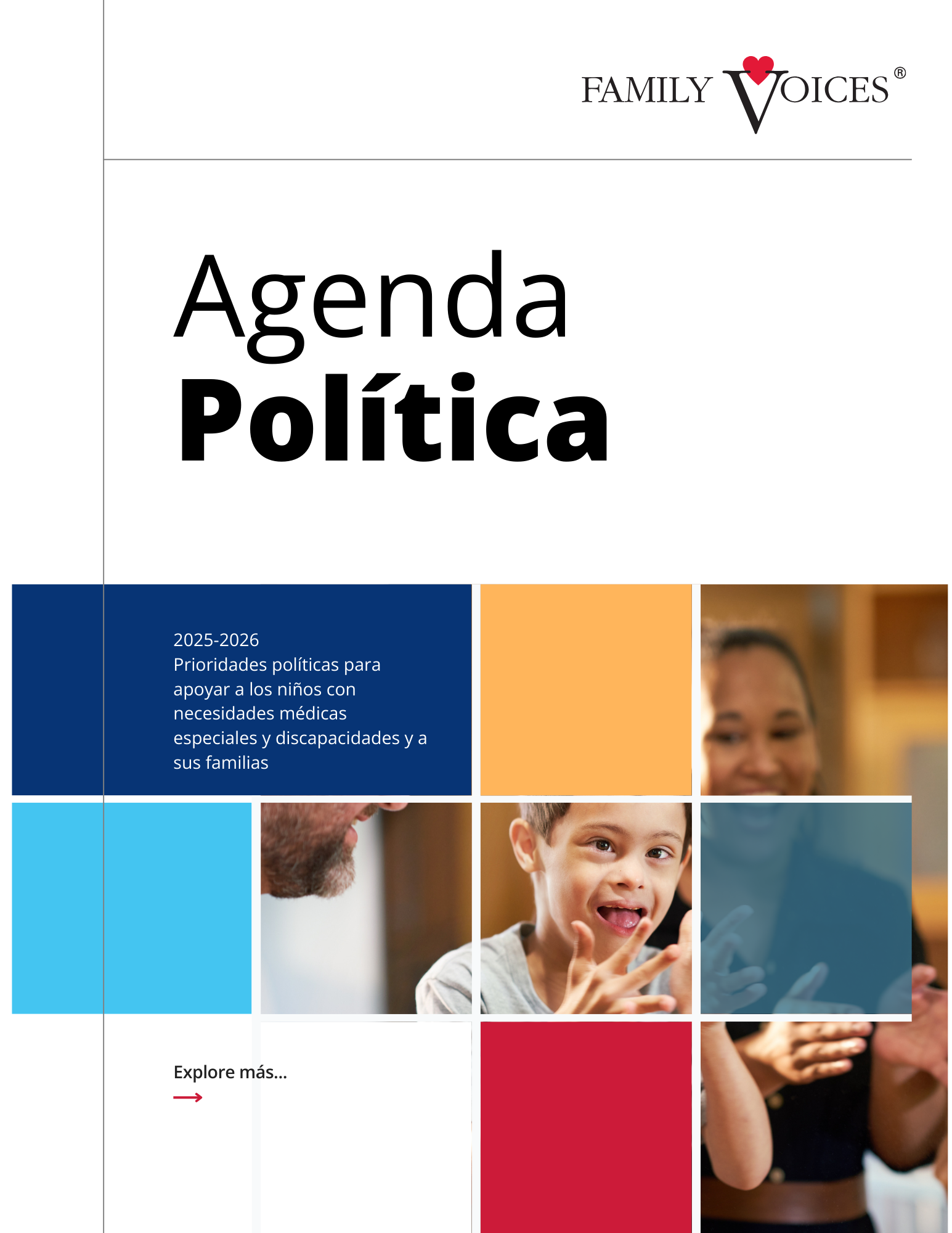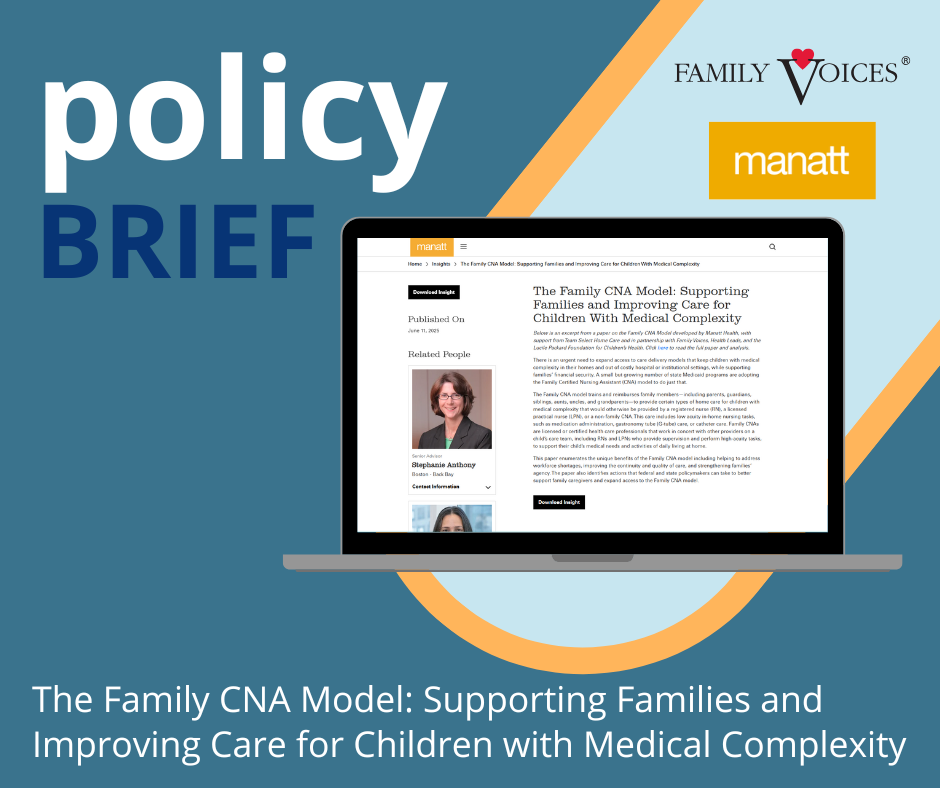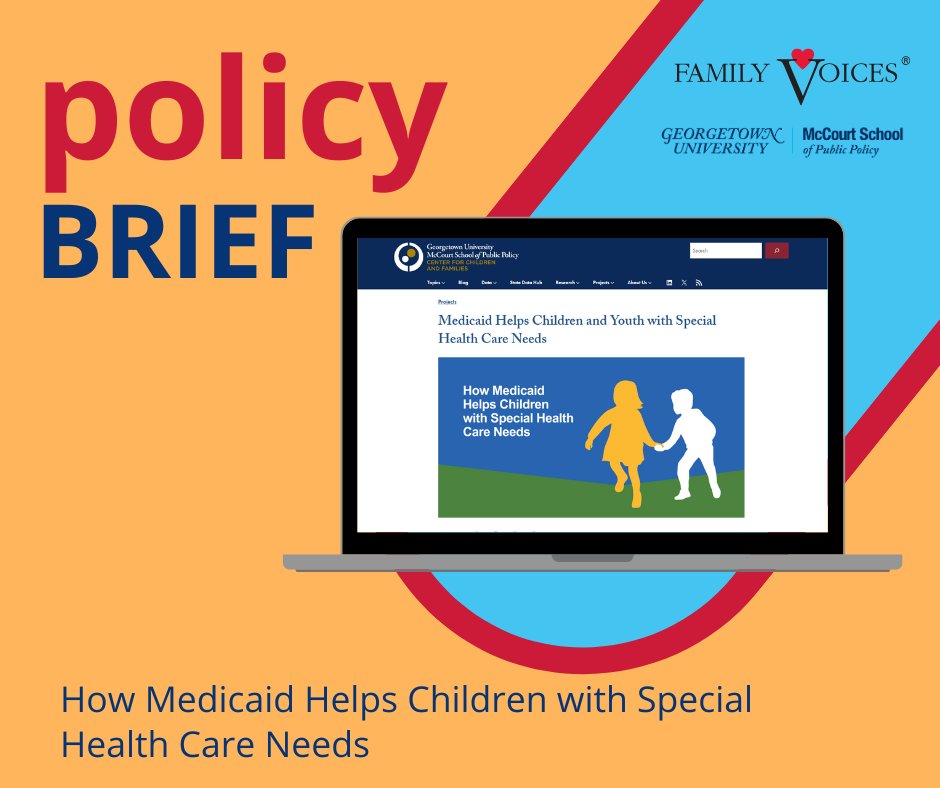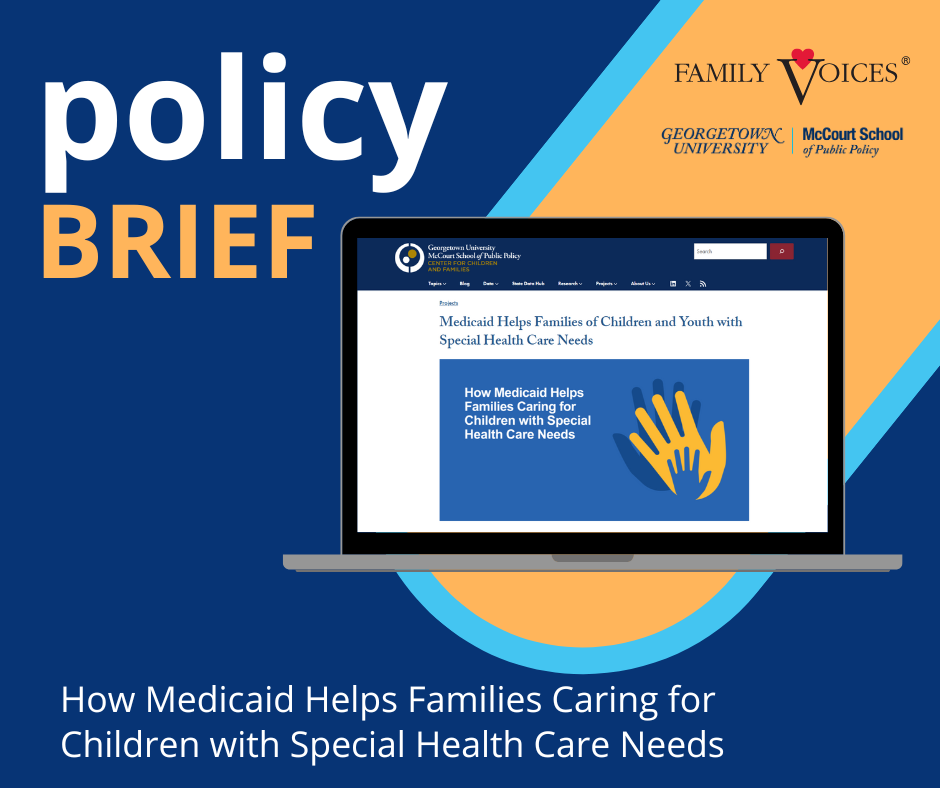
Public Policy
Policy Priorities to Support Children with Special Health Care Needs and Disabilities and Their Families
Our Strategic Policy Priorities
Children and youth with special health care needs and disabilities, and their families, face systemic barriers and biases that impede their ability to experience their best possible lives. Systems of care do not respond to their needs holistically or facilitate access to supports that enhance their quality of life.
To make the most impact, we focus our policy actions across all levels of government – federal, state, and local. We work with our family and organizational partners to lean on the various levers of policy change through education and advocacy.
Our current policy agenda includes:
- Expand access to peer-to-peer support for families of children and youth with special health care needs
- Support and expand Medicaid coverage for children and youth with special health care needs and their families and caregivers
- Improve the transition to adult health care for youth and young adults with disabilities and their caregivers and families
- Eliminate language access barriers
Family Voices collaborates with national child health and disability organizations, such as the Consortium for Citizens with Disabilities, The Arc, Autism Speaks, the American Academy of Pediatrics, and other groups.
Recent Policy-Related News
Upcoming Events List – June 2025
July 8 – 10 – Learn more and register for the 2025 Training Institutes: Building a World Where Young People Thrive. Join a national gathering of experts and leaders working at the federal, state, and local levels to transform public systems, programs, and services for...
Lista de próximos eventos – Junio del 2025
8 al 10 de julio – Para más información e inscripciones para los Institutos de Adiestramientos del 2025: Construyendo un mundo donde los jóvenes prosperen (2025 Training Institutes: Building a World Where Young People Thrive). Únase a una reunión nacional de expertos...
New Resource – June 2025
Check out our newly updated public policy page. The page currently includes our strategic policy priorities, recent policy briefs and blogs, and more. New resources are be in English and Spanish, with more languages in development. We are working on adding more...
Reconciliación presupuestaria e impacto en Medicaid: Actualización del Senado – junio del 2025
Durante el último mes, el Senado comenzó a introducir cambios en el proyecto de ley “One Big Beautiful Bill Act” de la Cámara de Representantes. El 16 de junio, el Comité de Finanzas del Senado publicó su propuesta con algunos cambios con respecto a la versión de la...
Budget Reconciliation and Medicaid Impacts: Senate Update – June 2025
Over the past month, the Senate began making changes to the House’s One Big Beautiful Bill Act. On June 16, the Senate Finance committee released their proposed language with a few changes compared to the House version. The Senate is still working through the Byrd...
Legislation
The legislation tracked below is for informational purposes only. It is not meant to be an endorsement for or against the legislation. Action updates may occur daily, if actions are taken by Congress. Newly introduced legislation will be added weekly.
The legislative tracker is sorted by latest action. To navigate this page, you can scroll through just as you would a normal webpage. You can also click Ctrl+F on your keyboard and type in the search box.
For additional information and to read the full text (if available), click the highlighted bill number. You can also navigate to Congress.gov and search using key terms or phrases, or the bill numbers listed below.






